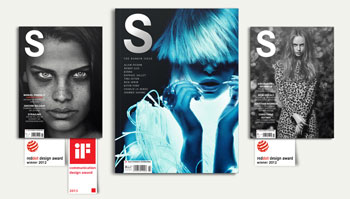Interesting Forbes interview with Stephan Schulz, head of professional photo at Leica, about how the camera maker is reinventing the medium format market on its own terms. Remember Leica’s S-System, launched in December 2009, is a newcomer in this market that requires a different type of camera than photojournalists do who use the 35mm Leica M.
According to Schulz the Germans are not afraid at all of the other medium format providers Hasselblad, Phase One and Mamiya. Leica’s here to “reinvent medium format for the digital age.” As newcomers without legacy hardware, they enjoy the advantage of designing a medium format system from scratch for digital. Schulz:
The S-System lenses have been designed from scratch, and optimized, for digital imaging — a crucial distinction. With film, there is nothing between surface of the film and the lens. But with digital, you have layers of glass between the sensor and the lens (for example the glass that protects the sensor). These layers of glass have an impact on performance. Lenses designed for medium format film obviously didn’t account for the layers of glass. The result is some degradation of image quality when such lenses are used in digital. Our made-for digital lenses, on the other hand, were designed only with digital sensors in mind. The result is a significant difference in image quality.
There’s another big practical advantage to designing specifically for digital: medium format film cameras have always had a problem keeping a large surface area of film completely flat. To compensate for this unevenness, medium format lenses were designed to mask the imperfections of an uneven recording surface — by not providing peak sharpness. But with digital sensors, unevenness is a non-issue. This allowed us to develop lenses that deliver uncompromising peak sharpness.
Schulz kind of evades the question why Leica’s medium format sensor is smaller than the competition’s. Smaller or not, Leica outperforms even the 50MP Hasselblad, he’s convinced.

They sell about 6,000 units per year and have a market share of some 20% after three years. They have more orders than they can produce, but Schulz is confident with the opening of Leica’s new factory in Wetzlar they’ll be able to increase capacity.
We all know that by then the initial M rush is long gone. To make good use of the increased production capacity Leica will no doubt surprise us with a range of product variations and new products to maximize capacity utilization.
To close with Schulz’s cryptic words:
We have historically succeeded not by copying a market but by reinventing it. We did it back in the day with the M, and we’re doing it now with the S-System.
Read the whole interview on Forbes.


